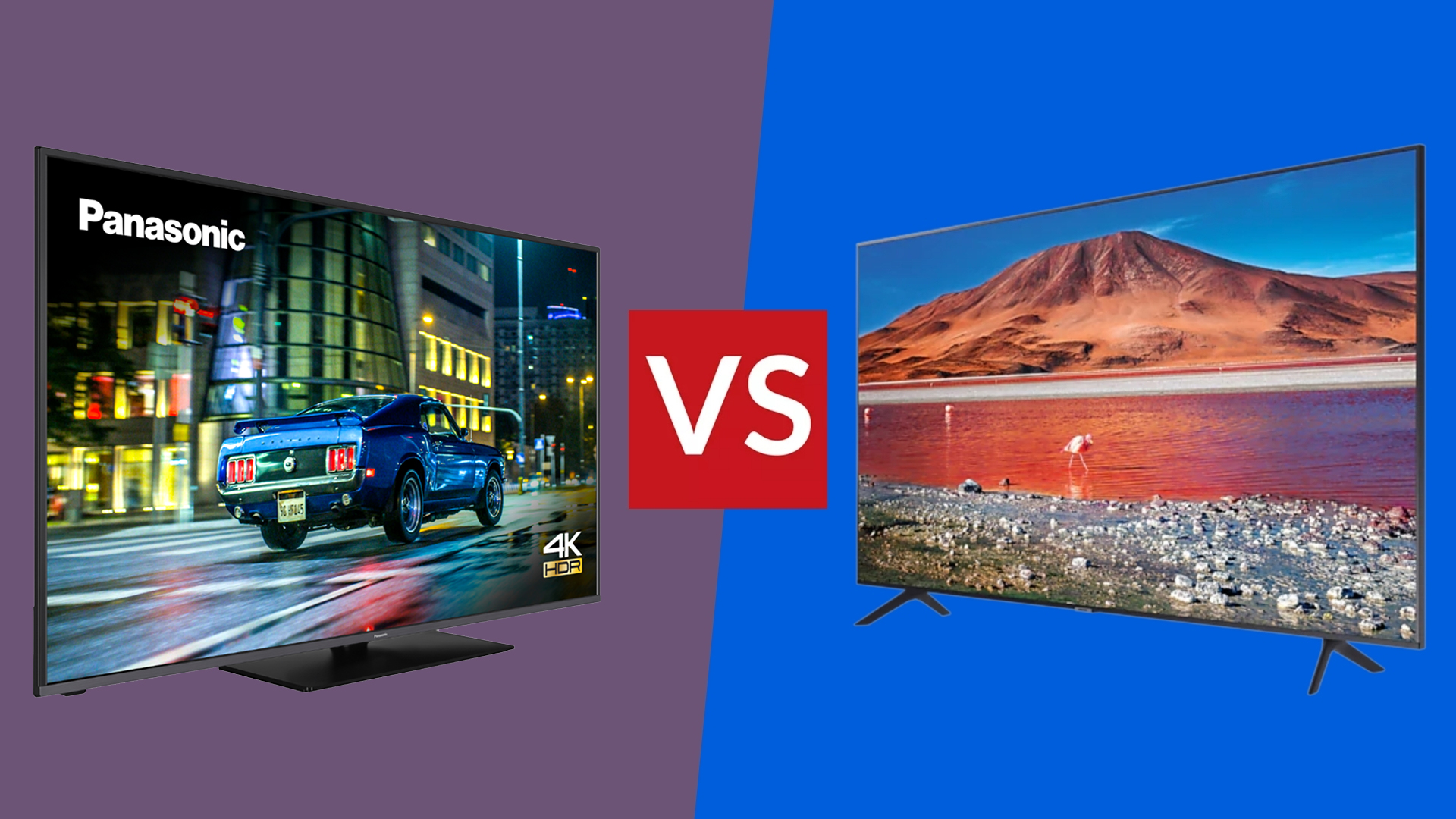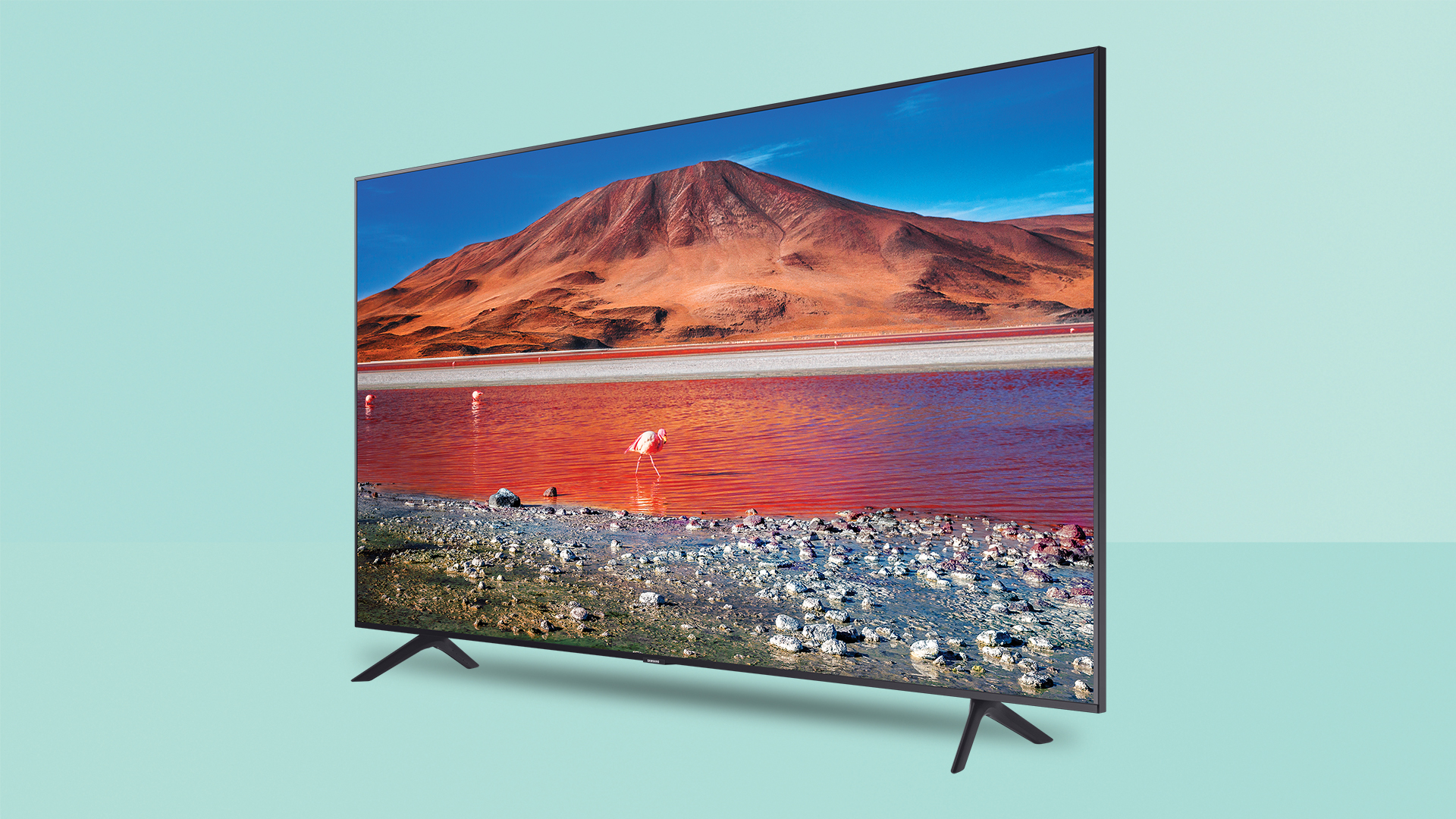

Welcome to T3’s Panasonic HX580 vs Samsung TU7100 guide, where we’ll be weighing the pros and cons of the two TV titans’ budget offerings. They’re on our best TVs under £500 guide, so we already know they’re good, but which one’s right for you?
If you’re looking to spend a bit more, you should check out our best TVs under £1000 list, or indeed, just pop over and have a look at the overall best TVs.
The credentials of Panasonic and Samsung when it comes to TVs are well known, and these two budget offerings deliver great bang for their buck. You can actually take a deeper dive into the Samsung model with our full Samsung TU7000/TU7100 review review.
Panasonic HX580 vs Samsung TU7100: Price

The Samsung TU7100 comes in a huge range of sizes.
Let's break down the prices on this Panasonic HX580 vs Samsung TU7100 guide. It will vary depending on the panel size, obviously, so we’ll take them one at a time.
The TU7100 comes in seven potential panel sizes. We won't list them all here (though you can find them below, along with the current prices), but the comparable sizes to Panasonic are 43-inches (£379), 50-inches (£429), 55-inches (£479) and 65-inches (£699).
The Panasonic HX580 is available in 43, 50, 55 and 65 inches. The 43-inch model is £399, both the 50 and 55-inches are available for £449 and the £65-inch version is £679.
Panasonic HX580 vs Samsung TU7100: Design & Connectivity

The Panasonic HX580 is pretty simply designed, and that suits us just fine.
Both the HX580 and TU7100 share a certain basicness in design. You won't find anything particularly flashy here, but they’re nice enough looking TVs and at this price, you’re unlikely to find something that looks significantly better, while also packing in all the hardware of these two.
Get all the latest news, reviews, deals and buying guides on gorgeous tech, home and active products from the T3 experts
They both have nice thin, unobtrusive bezels around the edge, slightly larger at the bottom. They’re noticeable, perhaps a little more on the Panasonic HX580 but you’re not going to be bothered by them.
Around the back, similarly, you’ll just find some curved black plastic, nothing that screams that any more thought was put into it than pure functionality. It’s unlikely you’re planning on setting up your TV in the centre of a room though, so it’s not a problem. Of course, they can both be wall mounted.
The main difference that might influence your decision here is actually in the stand, with the TU7100 taking a wide-set approach with two sets of feet on either end. The HX580 from Panasonic has a smallish central stand. Sizes will vary depending on the panel you want, but if you’re planning on placing the TV on a piece of furniture, you’ll want to make sure it fits – particularly with the Samsung model.
For inputs, or ports, you’re going to be happier with the Panasonic HX580 if you’re planning on plugging a lot into these TVs. It has 4x HDMI 2.0, 2x USB, ethernet, component video and VGA if you want to plug it into a PC.
The TU7100 has 2x HDMI 2.0, 1x USB, ethernet, composite and TOSLINK. Both are Wi-Fi and Bluetooth enabled as you’d expect and come with HDMI eARC tech that’s great for plugging into one of the best soundbars.
Panasonic HX580 vs Samsung TU7100: Picture quality

The Samsung TU7100 offer impressive 4K upscaling.
Once again, it’s hard to really split these two in terms of picture quality. Largely, any well-made TV in this price range is going to have a similar output. Panasonic and Samsung have both made some very good budget Ultra HD 4K TVs.
They do have the same downsides of a budget TV though such as a backlight panel that’s rather basic. They’re adaptive, but not localised – which means that the whole panel changes rather than the parts of the screen that need less or more light.
That means neither the HX580 nor the TU7100 has particularly strong black or contrast levels, but as we mentioned, that’s the all-around state of play at this price level. They're both among the better performers, with rich colours and good accuracy overall.
It is worth noting that while both TVs come with HDR10+ support, it’s only the Panasonic HX580 that supports Dolby Vision HDR. Its a more widely supported format than HDR10+ and is used by many of your favourite streaming services: Netflix, Disney+ and Apple TV+ for example. The Samsung TU7100 does offer great upscaling on HD to 4K, which will get the most out of any non-Ultra HD TV or movies.
Both the HX580 and TU7100 come with multiple modes, including a Game mode that reduces input lag, meaning there’ll be less time between you making a move and it translating to the screen. Both approach what the best gaming TVs are capable of, though there's no HDMI 2.1 support.
Panasonic HX580 vs Samsung TU7100: Verdict

Deciding the best TV between Panasonic HX580 vs Samsung TU7100 is hard. They’re similarly priced and perform about as well as each other in most areas. Obviously, if you’re after a huge panel, then the TU7100 is your only option; if you need a central stand then it’s the HX580.
Those extra ports on the Panasonic HX580 will appeal to some people, as well as the Dolby Vision HDR support that’ll get the best out of your 4K streaming content. The Samsung TU7100 on the other hand has brilliant upscaling for all the non-4K, HD content you’ll want to devour.
It’s up to you, but if we were going to pick, we’d edge towards the Samsung TU7100, if only because it’s Tizen-based operating system is much more rounded than the HX580s more basic functions.
